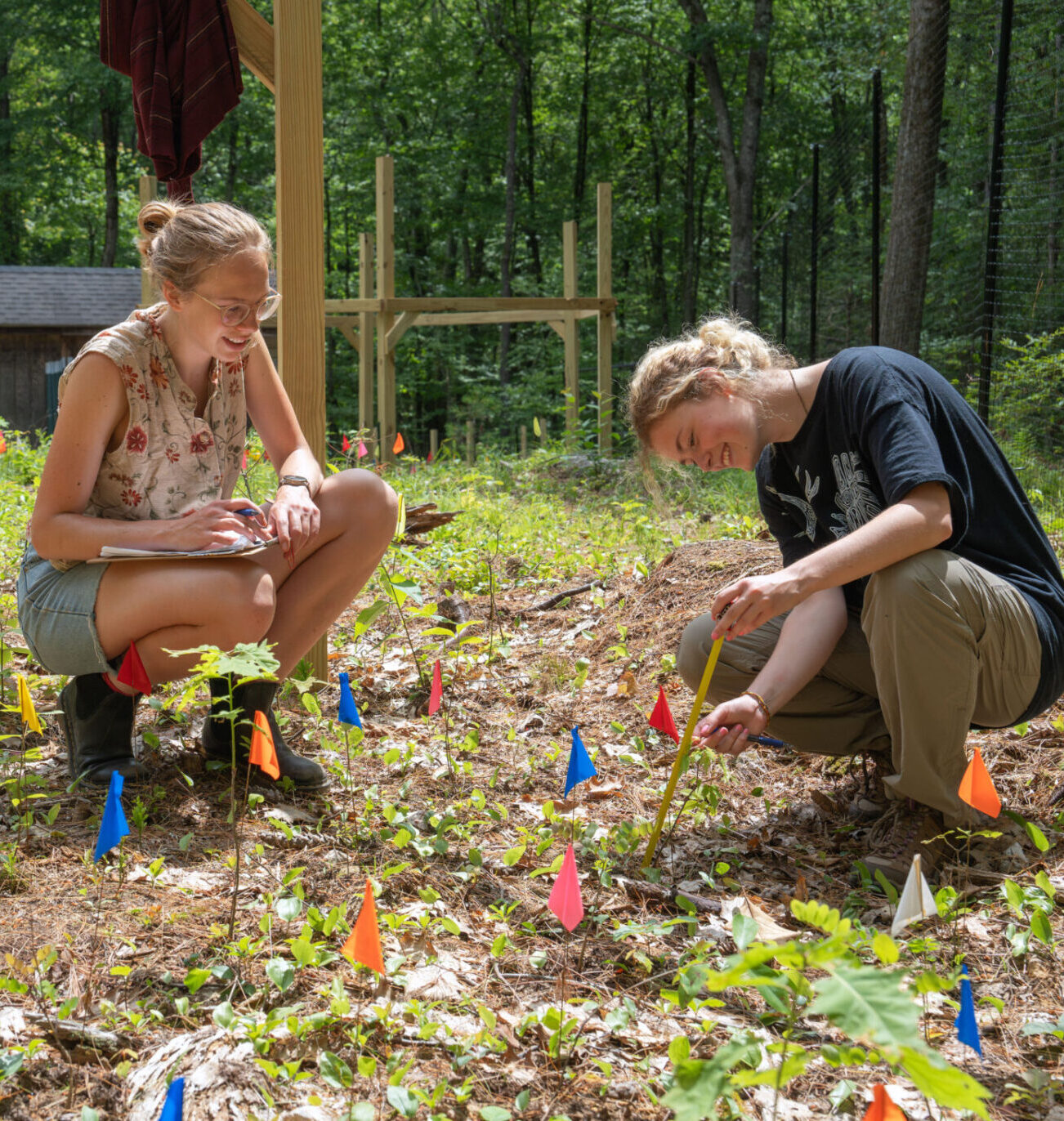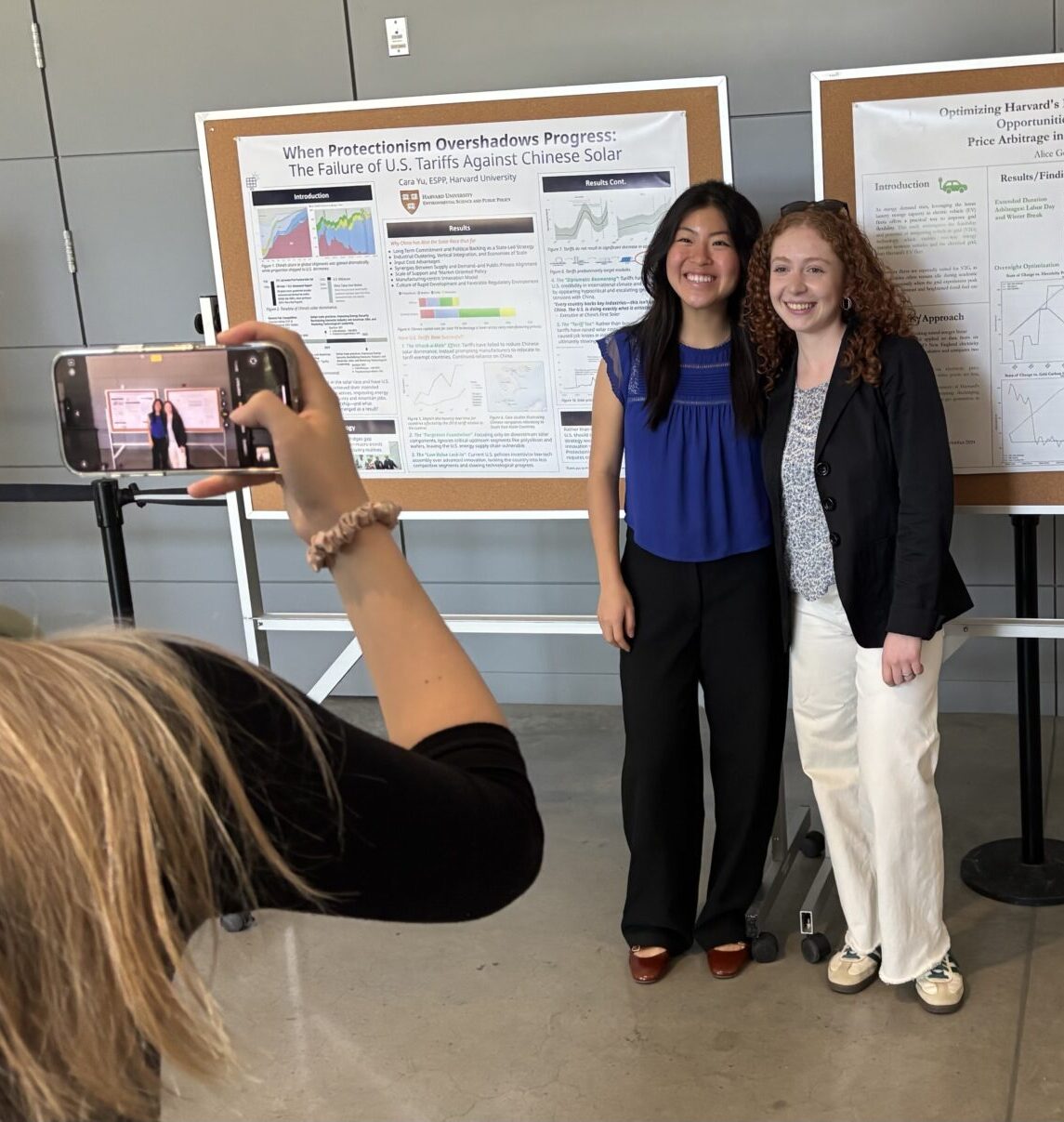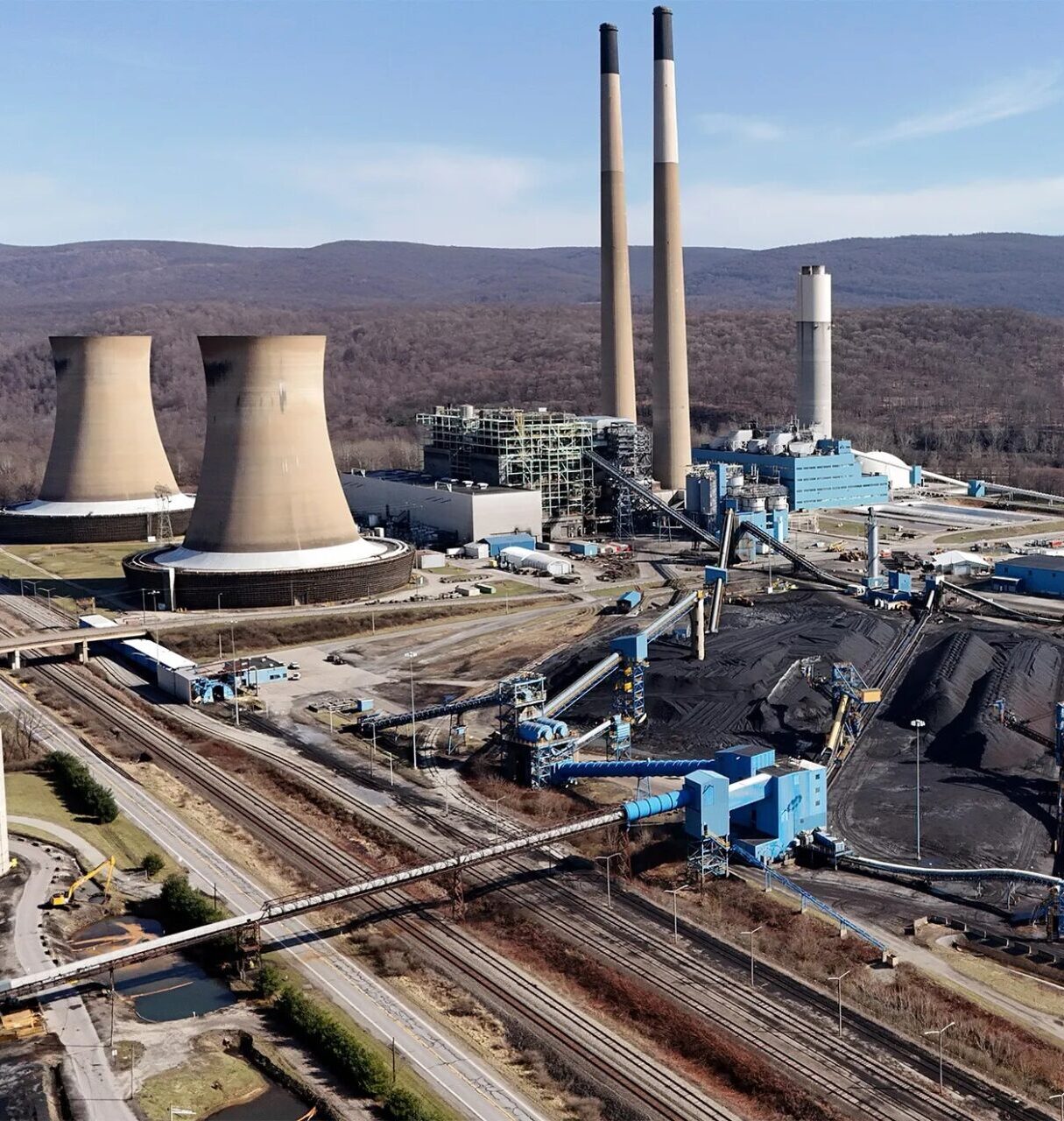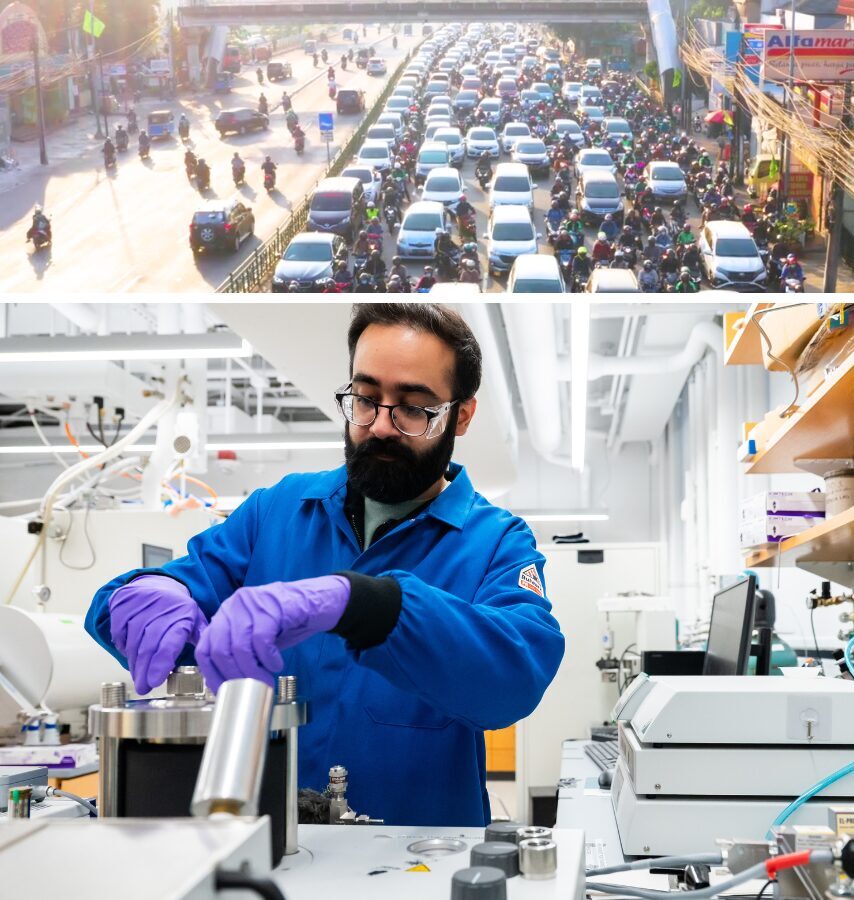Less rain but still wetter and greener?
Offsetting global warming with solar geoengineering would likely weaken the water cycle and reduce regional precipitation which has raised concerns that it could lead to droughts. However, changes to plants under high CO2 concentrations could mean that a geoengineered world would be on average greener and wetter.
Rising CO2 and other Greenhouse Gas (GHG) emissions are warming the climate and increasing the intensity of the hydrological cycle (also known as the water cycle, which describes the flow of water around the Earth’s climate), making some regions wetter and others drier. Solar geoengineering would cool the climate and weaken the hydrological cycle. The combined effects of offsetting all GHG warming with solar geoengineering would be a net reduction in the hydrological cycle strength, leading to significant reductions in regional precipitation (Govindasamy & Caldeira, 2000; Tilmes et al., 2013). Much of the concern in public commentary about solar geoengineering’s climate effects have focused on these regional reductions in precipitation as an indication of greater risks of drought and aridity.
However, much of the analysis and discussion of the hydrological response to solar geoengineering has ignored a critically important factor.
The effect of CO2 on plants
To draw in CO2 for photosynthesis plants “breathe” through stomata, tiny pores in their leaves. As CO2 diffuses into the plant to replace what has been used in photosynthesis, water diffuses out of the plant. Plants therefore face a fundamental trade-off – water for CO2 – that has shaped their evolution and shapes their responses to environmental conditions.
At higher CO2 concentrations, plants will be able to photosynthesize more effectively and accumulate more carbon in biomass, if there is sufficient water, light, and nutrients to do so. Plants will also become more water-use efficient, producing the same amount of biomass with less water, and there will be a decrease in stomatal conductance, a measure of the ease with which water escapes through their stomata (Franks et al., 2013).
These two effects have opposite impacts on the use of water by plants; CO2 fertilization leads to enhanced growth and more leaf area, and so higher consumption of water, whereas a reduction in stomatal conductance reduces water use by plants. As transpiration of water from plants is responsible for the majority of all evaporation from land, with estimates ranging from around 60% (Lian et al., 2018) to as high as 80-90% (Jasechko et al., 2013), any change in how they transpire can have a substantial impact on the hydrological cycle.
As an aside, it’s worth noting that while plants may become more water-use efficient and productive at higher CO2 concentrations, the effects of CO2 on plants is not all good news. Some lab and observational studies show that trace nutrient and protein content of staple food stuffs could be significantly reduced as CO2 concentrations rise (Myers et al., 2014). There would also be a chain of biodiversity consequences arising from dry-adapted plants losing some of their relative advantage and changed competition between C3 and C4 plants (C4 plants concentrate CO2 before photosynthesis so benefit less from an increase in ambient concentrations).
Greening and drying without a change in rainfall
Aridity is typically understood to mean a lack of moisture that limits the ability of a region to sustain life. However, as CO2 concentrations rise rainfall amounts which were too small to support plant growth before are now able to support it (Donohue et al., 2013). Even if the climate wasn’t changing at all, rising CO2 concentrations would make dry regions less dry from the perspective of plants.
Another take on aridity is a lack of water availability for human use. Assuming no change in water storage, runoff is given by precipitation minus evapotranspiration (the total of evaporation and transpiration). A recent study focusing on Australia isolated the effects of CO2 on vegetation from year-to-year changes in rainfall (Ukkola et al., 2015). They found that in wet regions rising CO2 concentrations led to an increase in runoff as evapotranspiration dropped because the effects of increased water use efficiency outweighed the increases in plant productivity. In dry regions, on the other hand, rising CO2 concentrations led to a substantial decrease in runoff as evapotranspiration increased. In these regions, a substantial increase in vegetation cover and plant productivity outweighed the effects of increased water-use efficiency. That is, even if the climate wasn’t changing at all, the effects of CO2 on plants could decrease water availability in dry regions and increase it in wet regions.
However, the climate is changing. As the planet warms some regions are receiving less rainfall and others more, and higher temperatures increase the evaporative demand of the atmosphere. Measures of aridity that focus only on these meteorological drivers of drought project that there will be a general drying of the world as the increased evaporative demand outpaces the average increase in rainfall (Dai, 2011). Yet there has instead been a general greening of the world (gaining vegetation cover), with only a small fraction browning (losing vegetation cover, Zhu et al., 2016), and mixed effects on river runoff (Alkama et al., 2013).
Recommendations for solar geoengineering research
What all this means is that it is not possible to understand how aridity and drought will change in the future without both accounting for changes in climate and the effects of CO2 on vegetation (Swann, 2018). This has important implications for those of us studying solar geoengineering.
1 – Changes in precipitation are only part of the story
Many studies of solar geoengineering have focused only on the temperature and precipitation response. I believe this holds for most, if not all, studies which have made quantitative evaluations of the performance of solar geoengineering or which have used climate model input for evaluating economic or other implications. This is a problem.
The assumption that I presume is underlying this choice is that a change in precipitation is a good indicator of a change in the water cycle on land and of potential water stress for plants. However, as I note above there are likely to be substantial changes in runoff and vegetation cover in regions that experience no change in precipitation. Precipitation only gives you part of the picture and is likely to mislead readers who may view a reduction in rainfall as a simple indication of aridification.
If you are interested in water availability for society and want to focus on only a single hydrological indicator, choose precipitation minus evapotranspiration over precipitation. It includes both the input and the output to the atmosphere and captures the important effects of CO2 on vegetation. Similarly, if you are interested in how well vegetation is doing, choose a variable like net primary productivity, which tells you how much carbon is being captured by plants, rather than precipitation.
2 – Vegetation uncertainties will matter more in solar geoengineering studies
Solar geoengineering could offset increases in temperature and reduce the magnitude of climate change in many respects (Irvine et al., 2016). As other drivers of hydrological change will be reduced, this means that the direct effect of CO2 on plants will have a greater relative importance.
My colleagues and I (Irvine et al., 2014) evaluated the uncertainties in the climate response of the Geoengineering Model Intercomparison Project (GeoMIP) for the G1 experiment (where the warming from an instantaneous quadrupling of the atmospheric CO2 concentration was offset by a reduction in incoming sunlight. Note this GeoMIP G1 experiment is not meant to be a realistic scenario of solar geoengineering deployment, rather it allows us to explore the processes that would shape more realistic scenarios). Figure 1 shows that GeoMIP models had very different evapotranspiration responses over tropical land-areas in the G1 experiment. Some models showed as much as a 25% reduction in zonal-mean evapotranspiration whereas others showed a slight increase.
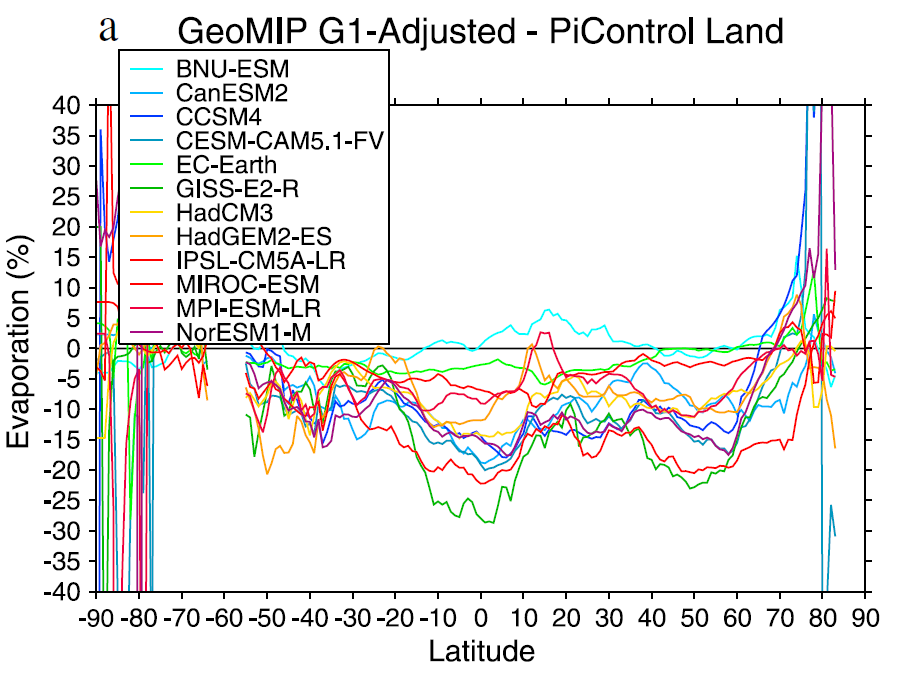
Figure 1. Shows the zonal-mean land-average evapotranspiration anomaly between the GeoMIP G1-adjusted experiment (adjusted so that global-mean temperature is restored) and control for the GeoMIP ensemble. Each line indicates a different model. Note the very large difference in responses in the Tropics. Reproduced from Figure 4 of Irvine et al. (2014).
Figure 2 shows the differences across the GeoMIP ensemble were greatest in the most heavily vegetated regions. In all the models, plants become more water-use-efficient at high CO2 concentrations, which suppresses transpiration, and in all models the rate of photosynthesis increases, which increases transpiration. Where the models disagreed most was with regards to how the much the rate of photosynthesis increased, see Figure 3 (Glienke et al., 2015). Some models showed more than a doubling of the rate of photosynthesis whereas others showed only a small increase. The models with the greatest increase in plant productivity tended to show the least reduction in evapotranspiration as the two effects of CO2 on water use counteracted each other.
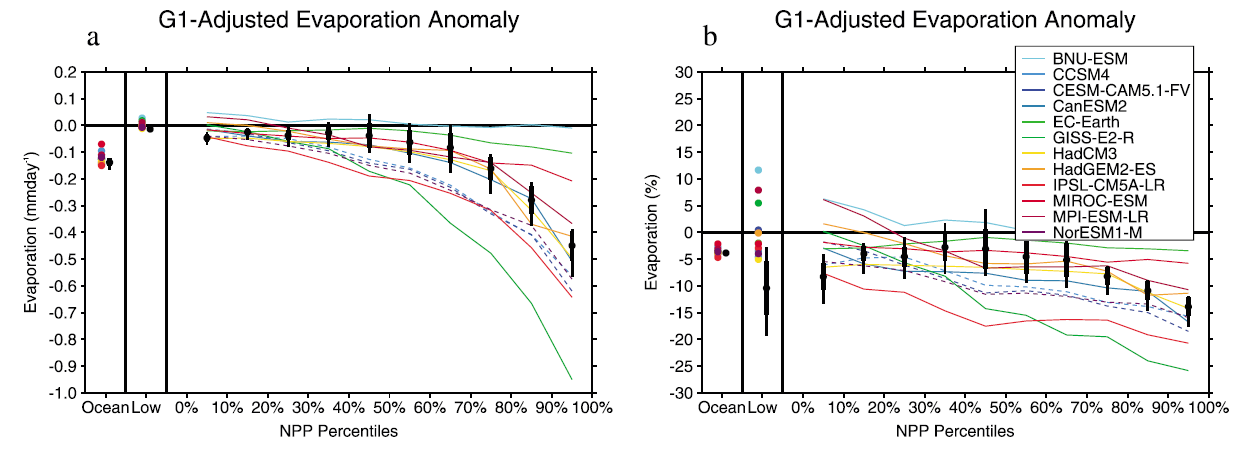
Figure 2. Shows the evapotranspiration anomaly between the GeoMIP G1-adjusted experiment as a function of vegetation productivity. The GeoMIP models are shown as colored lines. Note that the spread in evapotranspiration response is much greater in the most vegetated regions. Models with a nitrogen-cycle, i.e. those using the community land model, are shown with dashed lines. Reproduced from Figure 6 of Irvine et al. (2014).
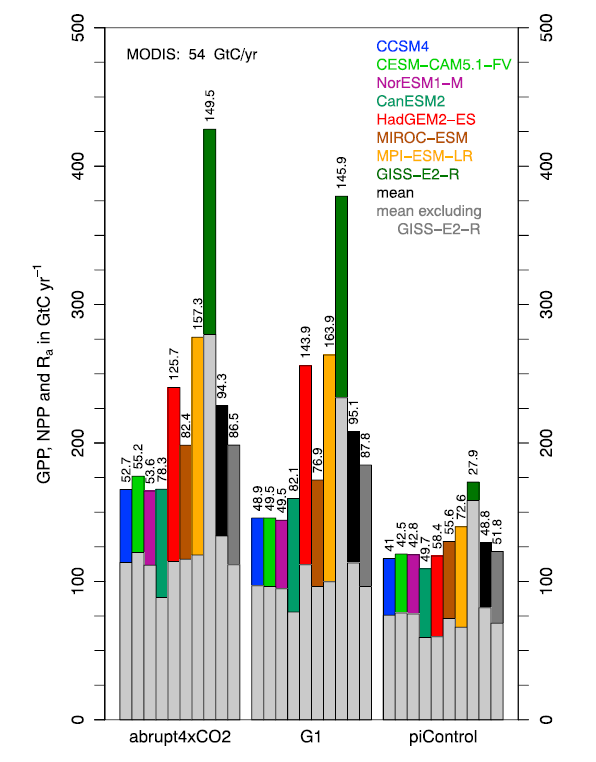
Figure 3. Shows the substantial differences in the response of vegetation to the GeoMIP experiments. The height of the bar indicates the Gross Primary Productivity (GPP, the rate of photosynthesis), the colored segment indicates the Net Primary Productivity (NPP, the rate of carbon capture by the plant) after respiration (grey section of bar). The mean response shows around a doubling of NPP in both the scenario with quadrupled CO2 and the G1 scenario (which has quadrupled CO2 and a reduction in sunlight). CCSM4, CESM and NorESM (the three leftmost bars) are the only models to include a Nitrogen-cycle. Reproduced from Figure 1 of Glienke et al. (2015).
Representing vegetation in Earth system models is challenging for several reasons. Models need to accurately represent the various factors that limit plant productivity, which includes not only water and CO2, but also temperature, light quantity and quality (direct vs. diffuse light), and nutrient availability. However, almost all the last generation of climate models did not include a representation of the Nitrogen-cycle, the most important nutrient limitation that plants face. This matters as those few models with a Nitrogen-cycle showed the smallest increase in the rate of photosynthesis and one of the largest reductions in transpiration in those GeoMIP simulations (Irvine et al., 2014).
3 – More work is needed to understand the hydrological response to solar geoengineering
Whilst hydrology has been at the center of concerns about the climate effects of solar geoengineering most studies to date have not applied appropriate measures to evaluate this change. Future work on the hydrological response to solar geoengineering must account for the direct effect of CO2 on vegetation and terrestrial hydrology.
It will also be important to go beyond evaluating hydrological change from a biophysical perspective to making a thorough evaluation of the climate impacts of these changes on society and ecosystems (Irvine et al., 2017). This will mean evaluating how these changes impact on the needs of populations, taking account of exposure and vulnerability. It will also mean recognizing that in some places climate change is having a positive effect, for example by increasing water availability in some water-stressed regions (Schewe et al., 2014).
However effective solar geoengineering is at offsetting the effects of the radiative forcing from CO2, the direct effects of CO2 will persist. The importance of ocean acidification has long been recognized in this field but the effects of CO2 on vegetation have largely been overlooked. To develop a better understanding of the potential and limits of solar geoengineering will require that the community recognizes the critical role of vegetation in shaping the hydrological impacts of solar geoengineering.
